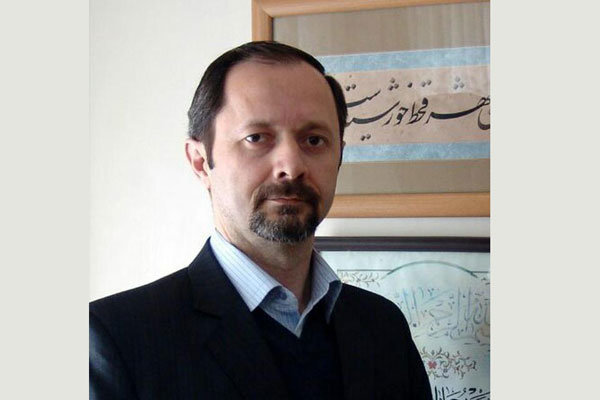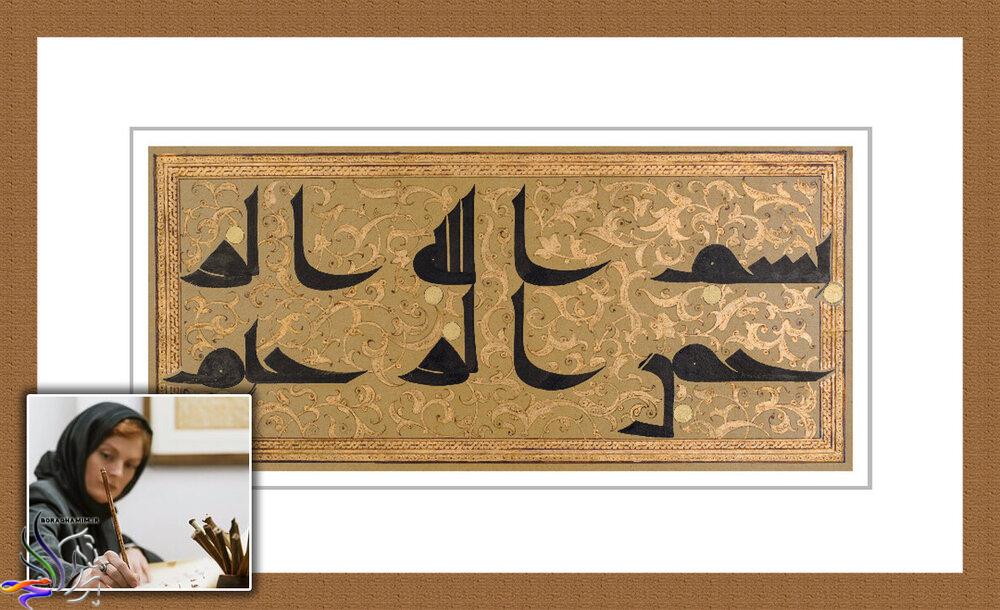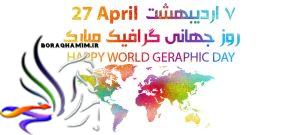Iranian expert and prominent Persian calligrapher Maryam Veisi said that UNESCO’s decisions on calligraphy in the region are insulting to the history of Iranian calligraphy.

Boraq Hamim art new site Reported: UNESCO has recently inscribed the traditional calligraphy in Islamic art known as Husn-i Hat in Turkey on its Representative List of the Intangible Cultural Heritage of Humanity.
Meanwhile, the organization also selected Iran’s national program to safeguard the traditional art of calligraphy on its Register of Good Safeguarding Practices.
“In this phrase ‘national program to safeguard the traditional art of calligraphy in Iran’, you can replace Iran with any other country,” Veisi told the Persian service of ILNA on Tuesday.
“This is a disgrace; this is insulting to the calligraphy history of Iran, which enjoys a diversity of calligraphy styles such as taliq, nastaliq and shekasteh nastaliq and masters, each one can be regarded as a peak in art history,” she added.

“This ridiculous phrase means that Arab countries and Turkey are the owners and family of the calligraphy and Iran is the governess in this field,” Veisi lamented.
She criticized the Iran Calligraphers Association, as the sole official organization that is responsible for calligraphy art, for its mismanagement, and said, “The association is expected to function properly.”
“People in charge of the association have exhibited poor performance in the study of calligraphy history; the center still lacks an appropriate specialized archives and library.”
“In addition, the association only focuses on the nastaliq and shekasteh nastaliq styles, ignoring other styles. Meanwhile, Turkey considers all styles of calligraphy, and therefore the country presents strong evidence to UNESCO for their claims,” noted Veisi who specializes in Kufic calligraphy.
“Despite the change in its official script, Turkey accumulates works by distinguished masters of calligraphy by organizing numerous major international events every year to enrich its treasure trove. Nevertheless, we know that no calligraphy style was invented throughout the history of the Ottomans, who only focused on styles such as thulth and divani, the latter having been derived from the taliq style of Iranian calligraphers. Therefore, all these reasons are sufficiently convincing to dispute and discount Turkey’s claims on calligraphy,” she concluded.

Several other Iranian art experts and calligraphers, including Hamidreza Qelichkhani, have criticized the UNESCO decision to register calligraphy for Turkey.
Qelichkhani is the author of “A Handbook of Persian Calligraphy and Related Arts”, which was published by Brill, a major Dutch publisher in Leiden.
Calligraphy is something beyond a beautiful handwriting or knowing the technique of Chinese characters. Calligraphy is the art of beautifully shaping signs that are formed by hand and with the correct arrangement, and is considered one of the Iranian arts that incorporates different types of calligraphy, principles and rules.
Other calligraphies in Iran include Rayhan, Toqia, Raqa, Thals, Naskh and Mohaqiq.
Message End/






More Stories
Graphic Design
Mohammad Sadiq Saif
Realism works of Mohammad Soleymanifar